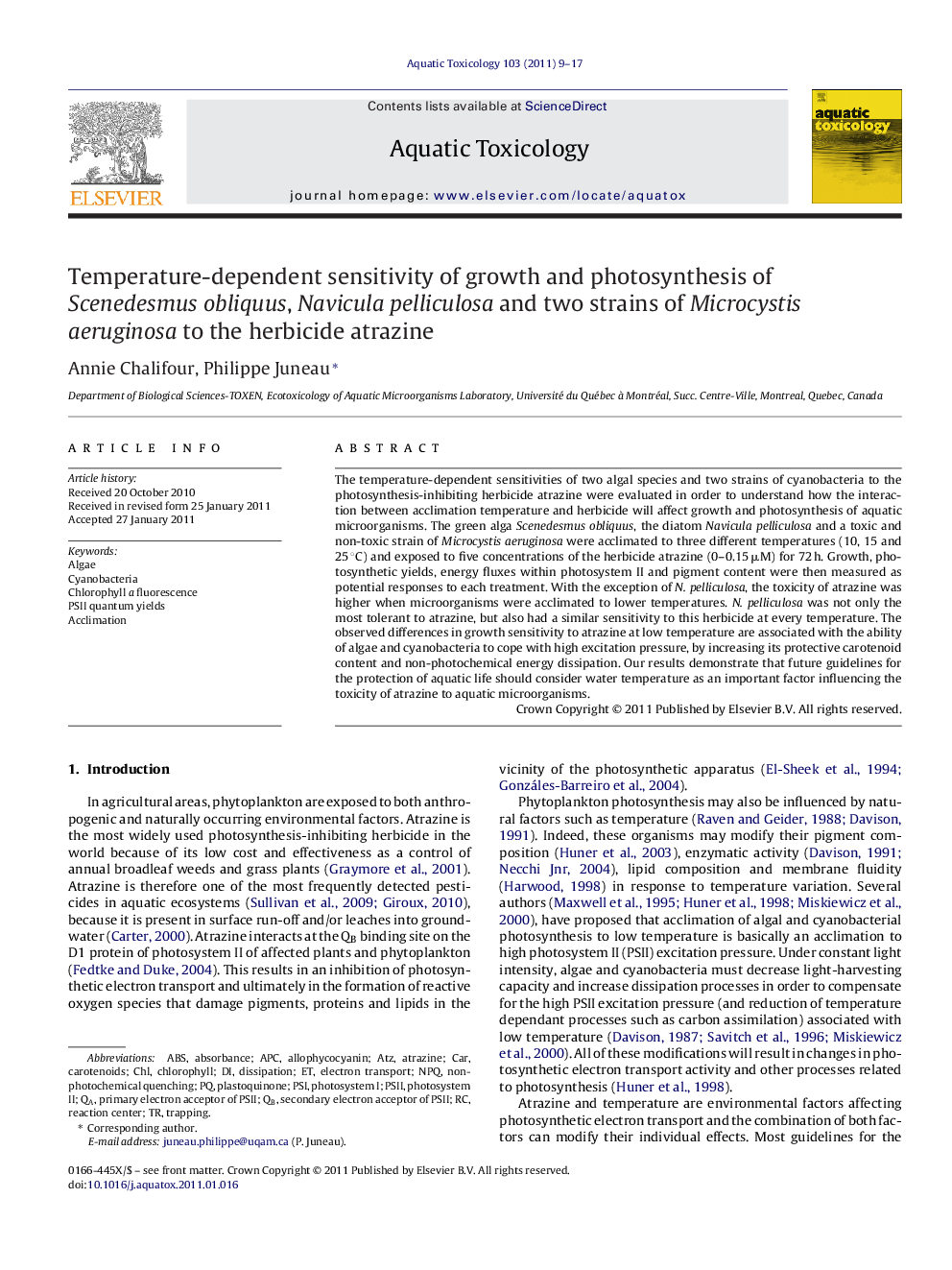| Article ID | Journal | Published Year | Pages | File Type |
|---|---|---|---|---|
| 4530069 | Aquatic Toxicology | 2011 | 9 Pages |
The temperature-dependent sensitivities of two algal species and two strains of cyanobacteria to the photosynthesis-inhibiting herbicide atrazine were evaluated in order to understand how the interaction between acclimation temperature and herbicide will affect growth and photosynthesis of aquatic microorganisms. The green alga Scenedesmus obliquus, the diatom Navicula pelliculosa and a toxic and non-toxic strain of Microcystis aeruginosa were acclimated to three different temperatures (10, 15 and 25 °C) and exposed to five concentrations of the herbicide atrazine (0–0.15 μM) for 72 h. Growth, photosynthetic yields, energy fluxes within photosystem II and pigment content were then measured as potential responses to each treatment. With the exception of N. pelliculosa, the toxicity of atrazine was higher when microorganisms were acclimated to lower temperatures. N. pelliculosa was not only the most tolerant to atrazine, but also had a similar sensitivity to this herbicide at every temperature. The observed differences in growth sensitivity to atrazine at low temperature are associated with the ability of algae and cyanobacteria to cope with high excitation pressure, by increasing its protective carotenoid content and non-photochemical energy dissipation. Our results demonstrate that future guidelines for the protection of aquatic life should consider water temperature as an important factor influencing the toxicity of atrazine to aquatic microorganisms.
